Appleby History > History Tour > St Michael's Church
St Michael & All Angels
A Short Guide to Appleby Magna Parish Church
By Richard Dunmore
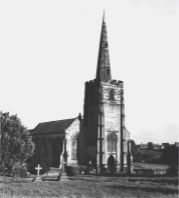 St Michael & All Angels Church was built in the decorated Gothic style which prevailed in the first half of the 14th century. The de Appleby Chapel, in the north-east corner of the church, appears to have been constructed first, with the chancel, nave and side aisles added a little later. The chapel, now used for the vestries and the organ, contains the tombs and alabaster effigies of the supposed builder of the church, Sir Edmund de Appleby, and his wife Lady Joan
St Michael & All Angels Church was built in the decorated Gothic style which prevailed in the first half of the 14th century. The de Appleby Chapel, in the north-east corner of the church, appears to have been constructed first, with the chancel, nave and side aisles added a little later. The chapel, now used for the vestries and the organ, contains the tombs and alabaster effigies of the supposed builder of the church, Sir Edmund de Appleby, and his wife Lady Joan
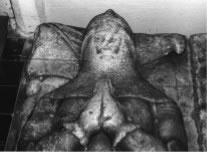 Sir Edmund de Appleby's tomb effigy |
The Lord of Appleby Magna Manor, Sir Edmund de Appleby, lived in his manor house a short distance east of the Church. The stone gate-house of this building survives as part of the Moat House. Sir Edmund fought with King Edward III at the Battle of Crècy in France in 1346. An inventory survives of his belongings made after his death in 1375. The moated farmhouse, built round a courtyard, consisted of a hall, bedroom, kitchen, larder, pantry and buttery, a private chapel and outbuildings. In the church, the ‘de Appleby Chapel’ was maintained by the manor and the tombs of Sir Edmund and Lady Joan, with their alabaster effigies, still lie there.
Whether there was an earlier Saxon church on the site is not clear. No priest was recorded at Appleby in the Domesday Book of 1086, but one of the landholders was the Abbot of Burton.
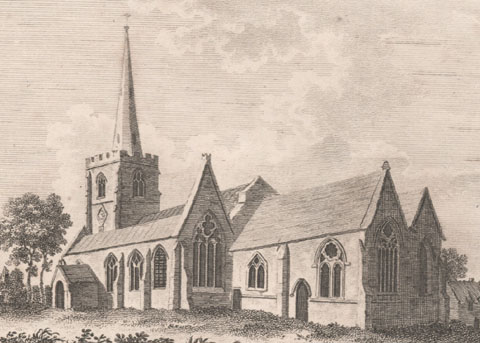
Before restoration showing the south porch
Click image for larger view
The nave and side aisles show evidence of the restoration work motivated by the Moores of Appleby Hall. The whole of the church interior was replastered in 1827 and the box pews and restyled gallery installed in 1837. The Misses Moore, aunts of the squire, gave a new font.
The roof level was raised and the ceiling given an elaborate rib-vault. The gallery at the west end is a (smaller) replacement for one built in 1697 to accommodate scholars and masters of Sir John Moore’s Free School - later Appleby Grammar School and now the Sir John Moore Church-aided Primary School.
At the time of this restoration work the old south porch and north doorway were closed off to be replaced by new matching windows in the side aisles (fourth from the east). A new entrance under the tower was created with steps flanked by classical pillars leading up from the street - convenient for access from the carriages of the squire, his family and other gentry, but exposed to the prevailing westerly winds.
The chancel was remodelled from 1871 with fittings and furnishings in tune with High-Church ways favoured by Revd John Echalaz (d. 1877) and his successor Revd C.T. Moore. James P. St Aubyn, an architect of national standing, was employed for this second phase of restoration. The altar table, choir stalls, pulpit and lectern date from this period.
Many of these items, as well as the picture windows in the chancel and south aisle, were purchased as memorials. The east window, The Ascension (1879), commemorates squire George Moore and his wife; the choir windows commemorate Rector John Echalaz, his wife and children (1870s & 80s); and the brass altar suite (cross etc) together with the large pictorial window in the south aisle, Suffer the Little Children, Headmaster W. S. Bamber (1891).
Much of the original medieval glass was lost in the restoration but pictorial fragments of early 14th century glass survive in the heads of the north aisle windows: two female saints, two angels dressed as priests with censers and a curious figure in early medieval clothing, which may be seen over the balcony.
The colourful shields on the interior church walls represent arms of families or bodies associated with the church and originally illustrated in the pre-restoration windows. The shields were made by Revd. Rex Meakin (Rector 1951-62). The de Appleby arms are displayed near the effigies and those of Burton Abbey are over the balcony. The royal arms in the centre of the north aisle refer to the connection of the de Applebys with Edward III. Other arms are those of families to whom the de Applebys were related by marriage.
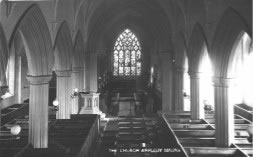 The restored interior of the church |
The first known patron was Richard FitzRoger in 1220 who endowed Latham Priory in Lancashire with the Appleby Church rights of patronage. Memorials to Patrons and Rectors from c.1600 are on the south wall of the choir. The Mould family, who held the patronage from 1610 until the late 18th century, provided three successive rectors: Abraham, Isaac and Jacob. Abraham was expelled from the Rectory during the Cromwellian period, but was reinstated at the Restoration of Charles II.
There is a peal of six bells: tenor 1619, four others 1769 and treble 1774. The Church Clock was the gift of the Misses Moore in 1850. The organ is by Nicholson & Lord rebuilt by W. Hawkins 1962. The Parish Registers (now in the Leics. Record Office) date from 1572.
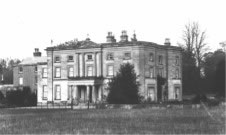 The Hall at Appleby Parva |
Appleby Parva Manor played a relatively minor role in the parish until the coming of the Moore family. Charles Moore whose family originated in Lancashire, bought the manor in 1599 and over the centuries it developed into the considerable estate of Appleby Hall. The estate was consolidated by the Enclosure Award of 1772 and the Hall enlarged in the early 19th century. By 1888 it had grown to about 4500 acres, with well over 2000 acres within the parish. By then serious financial problems had arisen and farms were gradually sold off. The Hall itself was sold and demolished in the 1920s.
The rectory too benefited from the enclosures with the award of land second only to that of the Hall. This is the origin of Upper and Lower Rectory Farms. A new rectory, now the ‘Old Rectory,’ was built in 1799 and the Moores acquired the patronage shortly afterwards.
The Moore arms, with the royal lion awarded to Sir John Moore by King Charles II, may be seen in the most easterly of the south aisle windows. Other Moore memorials are in the south aisle.
Sources
J Nichols, History and Antiquities of Leicestershire, Vol. IV, part 2, Sir Edmund de Appleby (of Appleby Magna manor) p 429; Appleby Church: pp 433-436; Appleby Hall (Appleby Parva manor) p 439 ff.
N Pevsner, The Buildings of England, Leicestershire & Rutland, Penguin, 1960, pp 47-48
Appleby Magna Parish Records, Leicestershire Record Office 15DE55, inter alia 1827-31 and 1870-72 Appleby Church restorations
Appleby Hall Estate Sale Catalogues, 1888, 1889 & 1919
© Richard Dunmore, July 2000
More about The Church
Other articles on this site relating to St Michael's Church:
- Appleby Church Restorations, Richard Dunmore (4 parts)
- The Origins of Church and Manor, Richard Dunmore (2 parts)
- Church and Manor Revisited, Richard Dunmore
- Appleby Church page on the Appleby Magna village web site
>> Next Stop on the Tour: Church Street

